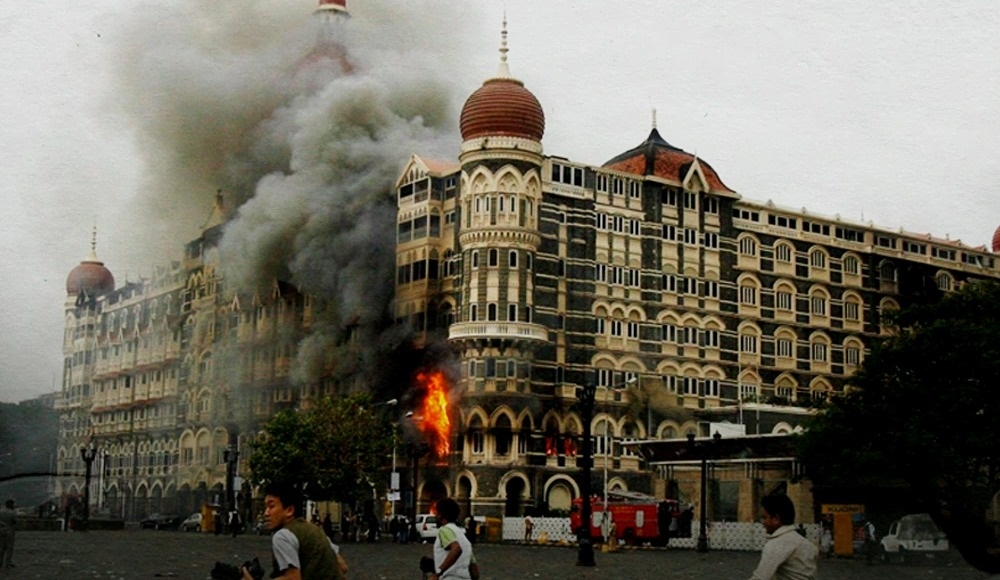New Delhi: November 26 serves as an indelible reminder to the world that terrorism is the foremost adversary of humanity in the 21st century. Even 15 years after the fateful 26/11 attacks in Mumbai, the wounds inflicted by the tragic event remain raw and compel us to confront the ominous reality of the menace known as “terrorism.”
For India, the assault laid bare vulnerabilities within the national security apparatus, prompting substantial and decisive action to ensure that history does not repeat itself.
On that fateful day, 10 terrorists of the Lashkar-e-Tayyeba (LeT) infiltrated Mumbai and went on a horrifying killing spree that claimed the lives of 166 people and left 300 injured over a period of four relentless days.
The alarming ease with which the LeT terrorists navigated the Arabian Sea, journeying from Karachi to Mumbai undetected and subsequently wreaking havoc in the city, underscored critical vulnerabilities in India’s security apparatus.
The incident not only exposed weaknesses in India’s maritime security but also revealed gaps in the internal security grid and the inadequacy of the counter-terrorism infrastructure and local law enforcement.
One of the critical shortcomings highlighted by the 26/11 attacks, was the lack of effective Intelligence- sharing among various agencies.
In response to these glaring shortcomings, a decisive decision was made to fortify the Intelligence Bureau’s (IB) Multi Agency Centre (MAC), a crucial hub tasked with coordinating the exchange of information between central agencies, the armed forces, and the police force. Defunct subsidiary MACs were revitalised and mandatory, real-time information and analysis meetings were instituted to enhance collaboration.
“The establishment of specialised counter-terrorism units and the use of technology to streamline information-sharing have been pivotal in enhancing the nation’s ability to pre-empt and respond to potential threats,” said a Delhi Police officer, requesting anonymity.
Recognising the evolving nature of terrorism, amendments to the Unlawful Activities Prevention Act (UAPA) were made, broadening the definition of terrorism.
The Parliament also took significant action by passing the National Investigation Agency (NIA) Act, establishing the country’s first truly federal investigation agency. This legislative move aimed to strengthen India’s ability to combat terrorism effectively by providing a centralised and empowered investigative body.
Following the 26/11 attacks, significant changes were also implemented to fortify maritime security in India. The Indian Navy assumed comprehensive control over maritime security, while the Indian Coast Guard took the responsibility of safeguarding territorial waters. Additionally, the Coast Guard assumed the responsibility of coordinating with the numerous marine police stations that were established along India’s coastline.
To enhance transparency and tracking capabilities, the government mandated that all vessels exceeding 20 metres in length must be equipped with an Automatic Identification System (AIS). This system transmits crucial identification and other information, supplementing the existing international regulation that requires AIS for vessels exceeding 300 gross tonnages. These measures were instituted to bolster surveillance and ensure a more robust response to potential security threats at sea.
The 26/11 attacks also highlighted the importance of public awareness and preparedness. “Since then, there has been an increased focus on educating the public about recognising and reporting suspicious activities. Training programs and drills are regularly conducted to prepare law enforcement agencies, security personnel, and the public to respond effectively to emergencies,” said the officer.
However, along with these challenges, India is now also facing cyber security threats. Plus, it has to contend with the fact that Pakistan’s Intelligence service ISI which is in cahoots with terrorists has now resorted to the use of gangsters within the country to fulfil its nefarious plans.
The ISI reached out to these criminals, offering incentives such as money, drugs and weaponry to further their plans of inciting discord and unrest within India.
“From 2017 onwards, the ISI started recruiting and contacting gangsters. Their first recruitment was gangster Harwinder Singh Sandhu, known as Rinda, who was later sheltered in Pakistan. Rinda came to the ISI’s attention due to his fearless activities,” revealed inside sources.
Their plan even involved targeting popular Punjabi singer Shubhdeep Singh a.k.a Sidhu Moose Wala, known for his links to the Bambiha gang, as a means to incite unrest and spark a Khalistani movement in the state.
While this sinister conspiracy aimed to create turmoil under the guise of religious conflict, it was ultimately thwarted with the arrest of the accused in the murder case and through further investigations by intelligence agencies.
This led to clashes between the Bambiha gang and the Rinda-Bishnoi alliance, further attracting the attention of Pakistan’s ISI and now the Bambiha gang is getting support from them.
As per sources, it is suspected that Rinda, after the failure of the operation to foment unrest and the RPG attack on the Mohali Intelligence Headquarters, was either killed by the ISI or died due to a drug overdose. It is also suspected that the ISI was not happy with his work.
However, recent arrests and seizure of consignments of weapons and drugs by the police and other security agencies indicate that the Bambiha gang is in constant touch with the ISI and is being operated by its members sitting abroad, especially Arsh Dalla.
“Investigation has also revealed that the proceeds of crime are used to purchase sophisticated weapons, which also includes the delivery of weapons across the border through Pakistan-based conspirators/associates. Arsh Dalla, coordinates the cross-border drone-based delivery of weapons with the help of accused Naveen Bali, who further gets them delivered with the help of his associates,” revealed the NIA charge sheet.
–IANS


Comments are closed.